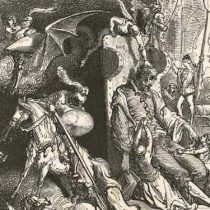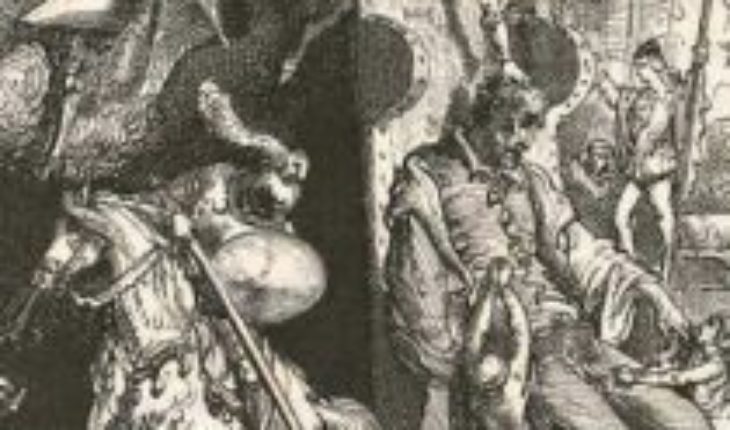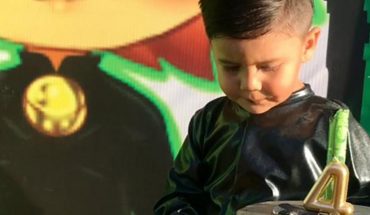
Among all the alienated works cervantines stands out with preeminence the figure of Don Quixote, whose mental disorder, the fundamental cog of the novel, has been the subject of multiple studies since the nineteenth century. Pedro Laín Entralgo said that “many and very diverse among themselves… have been the curious who have tried to visit Don Quixote to really ask him what he is, according to what his creator tells us.” But, the most common medical approach attends to the clinical examination of the madness of the hidalgo Alonso Quijano, who has been diagnosed at all times according to the knowledge of medical science.
Among the first doctors to write about Don Quixote’s madness are the famous Philippe Pinel, one of the founders of “scientific psychiatry”, who, in 1801, turned to Don Quixote to make an “admirable description of monomania”, characterized by the development of delusional and obsessive ideas, and his disciple Jean Etienne Esquirol, who established for Alonso Quijano the diagnosis of “ranante folieison”, a subtype of mania without intellectual deficit.
Among the decimonic Spaniards it was Antonio Hernández Morejón, who in his work “Bellezas de medicina practice discovered in the Ingenious Hidalgo Don Quixote de La Mancha”, published in 1836, presented a complete medical history of Don Quixote, which he described as choleric and melancholy.
Don Quixote reading cavalry books in his studio, in the prologue of ‘L’ingénieux hidalgo Don Quichotte de la Manche’ illustrated Gustav Doré, engraved by H. Pisán and printed by Louis Viardot. (L’Hachette et Cia., Paris, 1823. BNE – Hispanic Digital Library, CC BY-NC-SA Cognitive development of an elderly man
Don Quixote’s psychiatric clinical examination shows an elderly man, aged about 50, with symptoms of anorexia and insomnia, whose attitudes could be derived from cognitive impairment, and with recurrent manifestations of visual hallucinations.
Based on this symptomatic courtship, most of its pathographs have coincided, at least in early stages, in the diagnosis of monomania, for some with gear dyes and erotomania, which evolves, over time, into a paranoia picture.
As part of the celebrations of the third centenary of the publication of El Quixote, the Aragonese physician and literate Ricardo Royo Villanova, based on Emil Kraepelin’s postulates on the latter disorder, he provided his vision on the medical history of the Cervantian character, establishing the diagnosis of: “… chronic paranoia or systematized or partial delirium of expansive type, megalomaniacal form and philanthropic variety”.
In 1932, José Goyanes Capdevila, following the psychosomatic theories of Ernst Kretschmer, published his work “Typology of Quixote. Essay on the psychosomatic structure of the characters in the novel,” and diagnosed Don Quixote’s disorder as delusion of interpretation or paranoia. Similarly, the erotic behavior of the gentleman is interpreted as a result of a phenomenon of sexual repression.
With the advent of current diagnostic criteria, if we opt for the “Diagnostic and Statistical Manual of Mental Disorders”, Alonso Quijano’s madness could fall within the diagnostic criteria of “delicant disorders”, or, if the International Classification of Diseases is chosen, within the “disorders by persistent dellusions”.
Delusions of grandeur
Other authors pose a differential diagnosis between three nosological categories: delirating mania, fantastic paraphrenia and passional psychosis. Among all these diagnostic criteria, the delusional ideas of Don Quixote stand out; these are mainly of greatness, albeit in minority conjunction with ideas of persecution (the use of “charmers” is always present), of defense or of chaste eroticism.
The acceptance of these delusional ideas and greatness on the part of Sancho Panza, makes it possible to extend the mental disorder of the hidalgo to his squire, in a painting of “folie’s deux”: “With so much so that Don Quixote claimed that two flocks of sheep were armies, that Sancho came to believe him”.
In a recent approach to the study of madness in the great cervantine work, Alonso-Fernández states that “El Quixote is a psychopathological novel, starring a mentally ill person”, placing Quijano’s pathological picture within the diagnostic criteria of bipolar disorder. Proof of this would be the compulsive reading of cavalry books. Other authors do not show the same diagnostic force and position themselves more in favor of a hypomaniacal picture, which would explain the tendency to detach from properties and to make large economic expenses.
‘The vision of Don Quixote’, Francisco de Goya. BNE – Hispanic Digital Library, CC BY-NC-SA Affective Disorders
Affective disorders can also be seen throughout Alonso Quijano’s quixotic trajectory. Suffice it, as a sample button, the melancholy dye that was inflicted by the Manchego’s own hidalgo by calling himself “Knight of the Sad Figure”. This disorder seems to get more intense in the last moments of your life. In fact, the rural doctor who attends to him, with his scientific knowledge, and his companion Sancho, with his popular knowledge, attribute to melancholy the physical deterioration of Don Quixote and, possibly, the cause of his death. He says verbatim the hidalgo on his mortal bed: “… already in the nests of yesteryear there are no birds of the war.”
Finally, another group of authors rule out psychiatric pathology and lean towards a neurological disorder. Thus, Alonso Quijano would be but an individual with a dementia with Lewy bodies, a variant of Alzheimer’s disease, characterized by progressive cognitive impairment, oscillations of cognitive ability, recurrent visual hallucinations and systematized illusions.
However, other scholars of chixotic biopathology rule out this diagnosis, while in Don Quixote there are obvious signs of intellectual decay (attention, memory, capacity for abstraction, etc.), but quite the opposite: flowery language, eloquent reflections, successful judgments, etc.
However, the perception of Don Quixote’s madness is not without criticism, there are authors who have wanted to ignore it, speaking of a hysterical mythomanian, or even a character repeatedly subjected to demonic possession, through skilled charmers. For others, the “crazy” meaning could mean, in the cervantine context, something completely different from what is now meant by psychiatric sickness.
Don Quixote lashes out against the flock of sheep, in ‘L’ingénieux hidalgo Don Quichotte de la Manche’ illustrated Gustav Doré, engraved by H. Pisán and printed by Louis Viardot. (L’Hachette et Cia., Paris, 1823. BNE – Hispanic Digital Library, CC BY-NC-SAA crazy life entrepreneur
This is the thesis defended by the philologist and historian Américo Castro, for whom Alonso Quijano is far from an alienated, but rather the opposite; it would be an excited entrepreneur who lives life in a “crazy” way.
In this position are also manifested some outstanding literary, such as Gonzalo Torrente Ballester, for whom the madness of Don Quixote is only a literary artifice of its author in order to exercise, from the acts, thoughts, comments and interpretations of a poor orate, a very sharp and shrewd criticism of the society in which he was able to live. In El Quixote the exaltation of madness would predominate as a powerful source of vitality, and Cervantes would play with a double sense of this meaning. Thus, it is not well known whether Don Quixote is a sane man who does crazy things, or a madman with moments of lucidity.
By way of conclusion on the madness of Don Quixote, we can return to the words of Juan José López Ibor, delivered in the opening address of the Fourth World Congress of Psychiatry, held in Madrid in 1966:
“Psychiatric diagnoses have rained down on Don Quixote. But “he” has remained rebellious to any weological label. There’s something about Don Quixote that I’d like to underline. He was crazy, but at the same time sane… That’s where You can see Cervantes’ genius. It is not that Don Quixote was crazy and Sancho sane, but that in each of them there was madness and sanity, although in unequal doses and ways… There’s no such thing as the absolute madman. There is no absolute sane. This is the man who makes life an open adventure between the world of reality and that of possibility. That’s why he advances, that’s why man is able to make history.”
Madness and sanity, as a perfect gear, come together closely in the cervantine universe, often impossible to delimit its boundaries for sure. Cervantes himself says so:
“That way, it’s not sanity/wanting to cure passion/when remedies are/death, moving and madness.”
Even, one step further, and following Miguel de Unamuno, we can conclude “That Don Quixote is crazy? Well, so what?”
Francisco López-Muñoz, Professor of Pharmacology and Vice-Chancellor of Research and Science, Camilo José Cela University
This article was originally published in The Conversation. Read the original.





